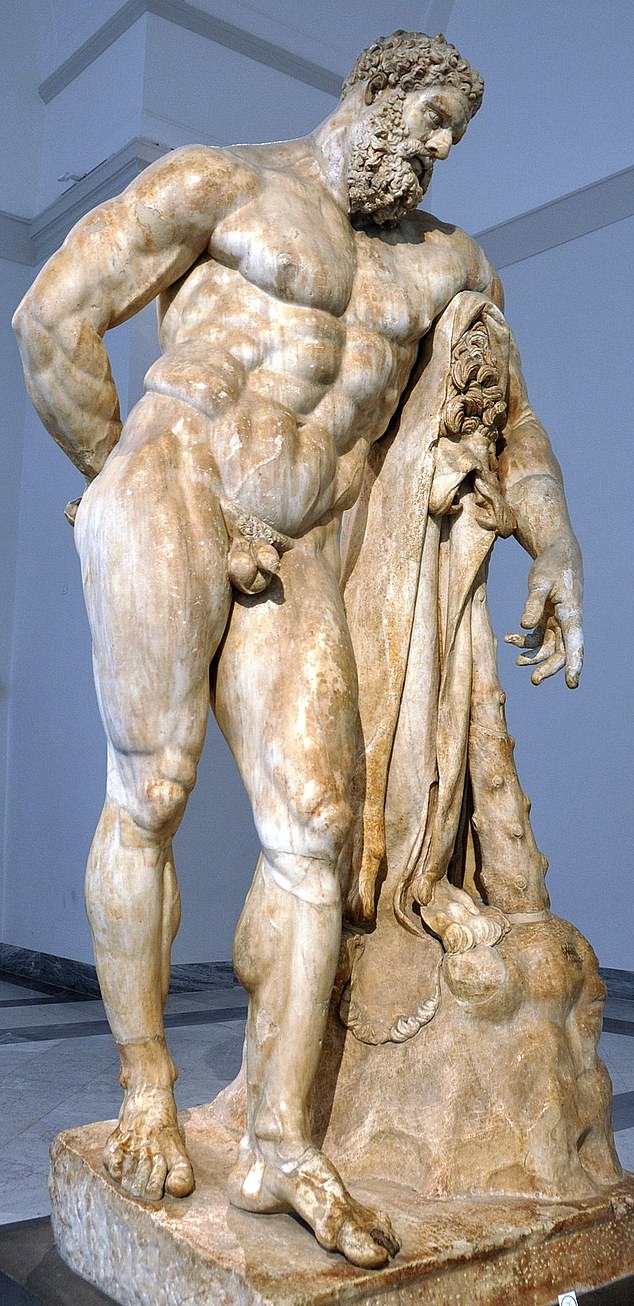Has the mystery identity of the Cerne Abbas Giant been solved? Academics claim Dorset’s 180ft chalk figure may depict Hercules – after centuries of debate over the landmark
The mystery surrounding the identity of who the giant of Cerne Abbas is supposed to be is something that has baffled people for centuries.
Some believed the naked 180-foot-tall chalk figure in Dorset was a lost British god, while others even claimed it was an image of Oliver Cromwell.
But now, after hundreds of years of debate, academics think they have the answer to the riddle on the hill and declare that the figure probably depicts the Greek hero Hercules.
Historians suggest that the hill on which the enormous chalk carving is located may once have been a staging area for Anglo-Saxon troops, with the giant acting as a rallying symbol.
In an article published in the magazine Speculum, Researchers say the giant was adopted by Christians who claimed it depicted their saint. It also states that the idea of the 'British god' was a myth born of a mistranslation.
Historians believe they have now solved the mystery of what Dorset's Cerne Abbas statue is meant to depict – with academics suggesting it depicts Greek hero Hercules
The findings follow a 2021 report that claimed the giant was born between 700 and 1100 AD. was cut into the Dorset ridge.
While the precise purpose of the work will likely remain a mystery, academics claim their theory is the simplest explanation.
“We tried to put together the most convincing and coherent story,” says Tom Morcom of the University of Oslo. “It's how it all fits together and how the giant most likely could have been understood.”
Researchers say there are many references to Hercules in the British Isles at the time the giant was built, with texts written about him by people with connections to the village of Cerne Abbas itself.
Academics also point to similarities in the design of the mythical hero himself, suggesting that the Cerne Abbas is a tribute to Hercules.
For example, the giant's club has a Hercules design. But it is different from the traditional Mediterranean version, which suggests a British spin on the hero.
Crucially, there are British depictions of a naked Hercules that match the phallic and unclothed image of the chalk engraving. Academics also hypothesize that Hercules' cloak may have appeared in the original work, but was lost over time.
“The position of his arm is such that it fits so well,” says Helen Gittos of Brasenose College, Oxford. “It seems very likely.”

Researchers say the sculpture has many similarities to the Greek figure Hercules
The giant's location has all the hallmarks of a military assembly point, historians claim. It is easy to spot, close to several major roads and locations attacked by Vikings.
Historians have theorized that there may have been a tradition of using images such as the giant as a military symbol.
For example, an 11th century source claimed that King Harold, defeated at Hastings in 1066, flew a banner of a fighting man, possibly inspired by the figure of Cerne Abbas.
Other theories, such as the suggestion that the giant represented Cromwell, have been discounted. This theory followed a new version of the giant during the English Civil War, which claimed it was meant to mock the Lord Protector – while academics now suggest this is unlikely.
Another theory came to prominence after the giant was dated, with people claiming it was a representation of an Anglo-Saxon god named Helith. This is also ignored by modern theories.
Researchers Morcom and Gittos traced the root of this idea to one text, with the name Helith coming from a 13th-century mistranslation of the Latin word for Elijah, the Old Testament prophet. It seems that Helith never existed.
Despite the latest study claiming to have answered the question of the giant's origins, researchers admit that the true meaning of the Cerne Abbas will remain one that will be open to interpretation for generations to come.
“Every generation seems to have different motives, even to this day,” Mr. Morcom said. “This movement to a kind of pagan fertility site or having a maypole on it and the dancing – these are all means of keeping the giant fresh in the landscape.”
